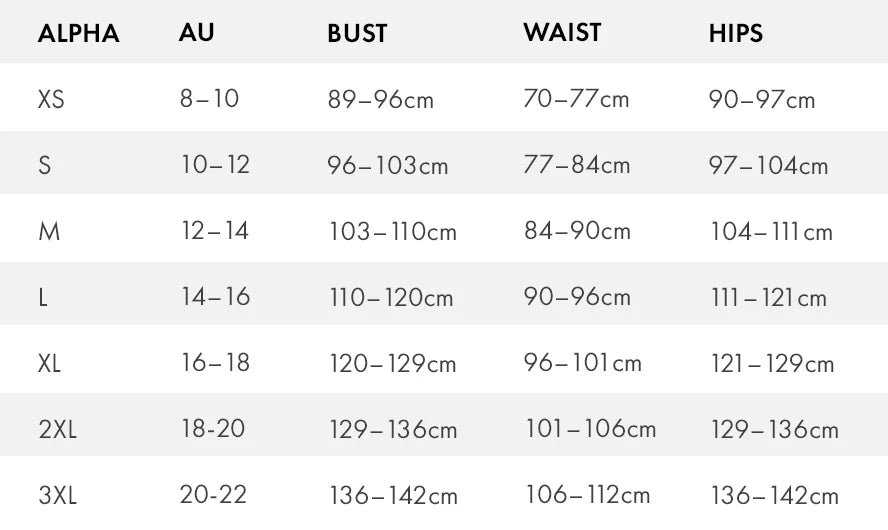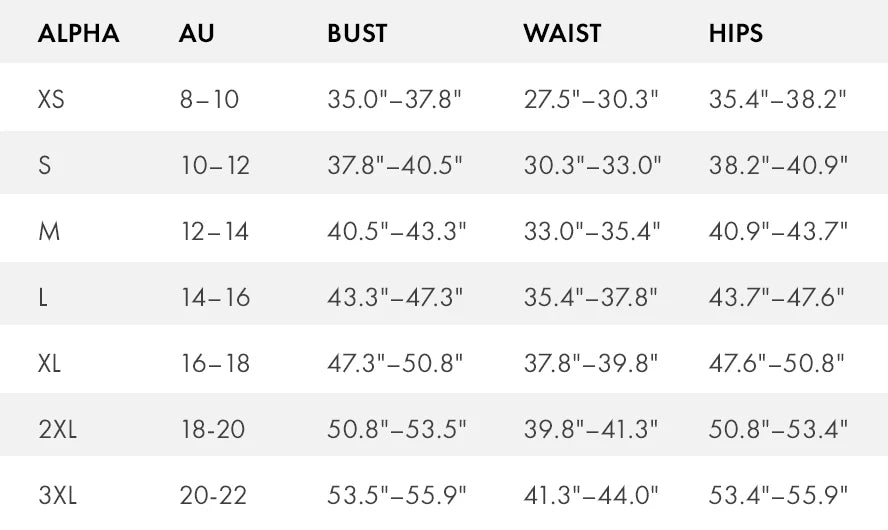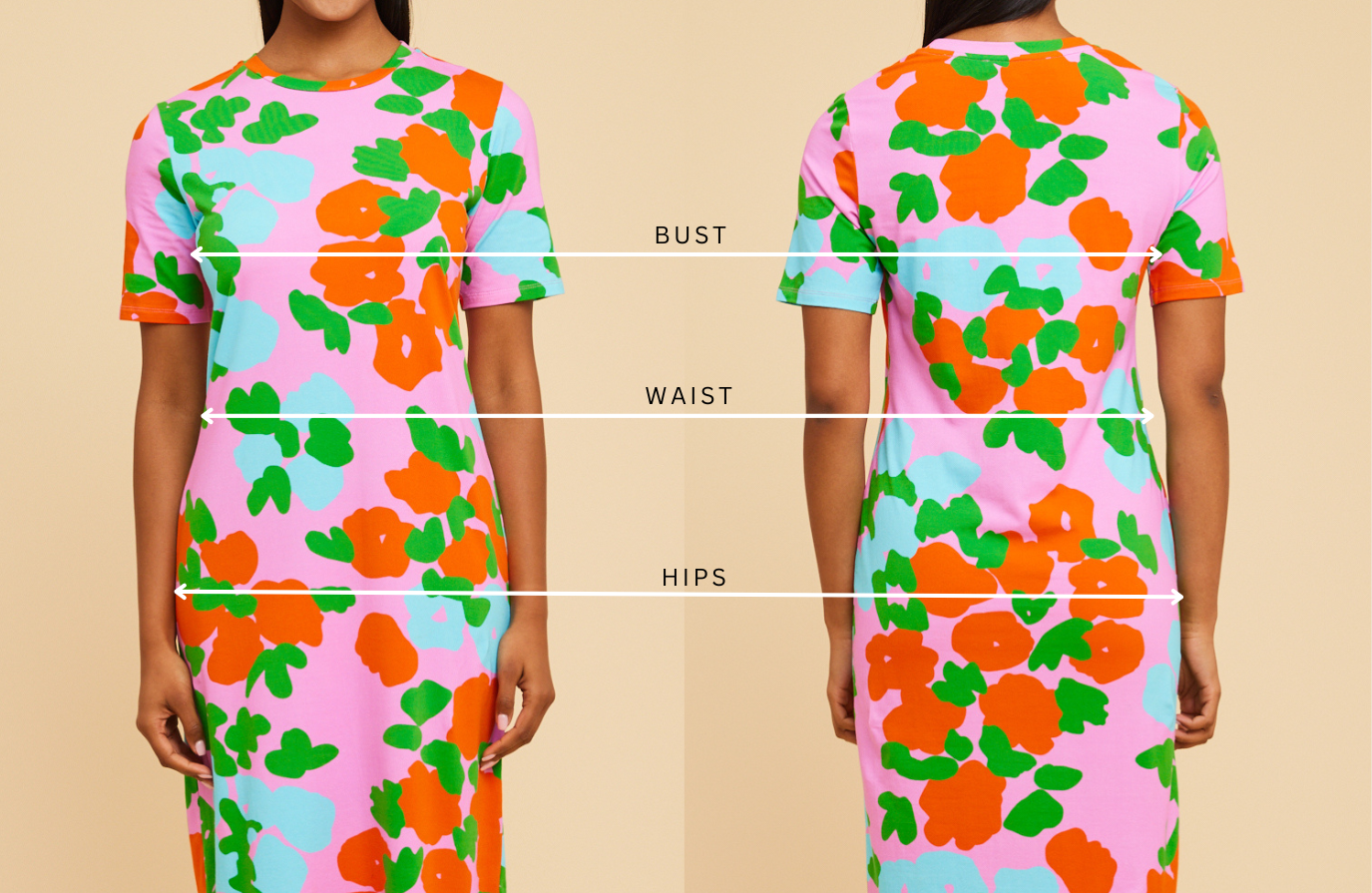SIZE GUIDE
The tables below provide the suggested measurements of the body for each size.
However, garment style often influences the fit, so we also include the exact measurements of each product across sizes in our product descriptions.


HOW TO MEASURE
The three key measurements to determine your size are your bust, waist and hip measurements.
We list which ever measurements are relevant to the fit of the style in each product description.
We recommend you use a flat, fabric measuring tape to take your measurements. For best results, measure without clothes on and in front of a mirror so you can make sure you are holding the tape firmly and correctly.
Below is a guide to where to take each measurement however each body is different so please adjust placement where necessary and make sure you are measuring the widest part of each section.

